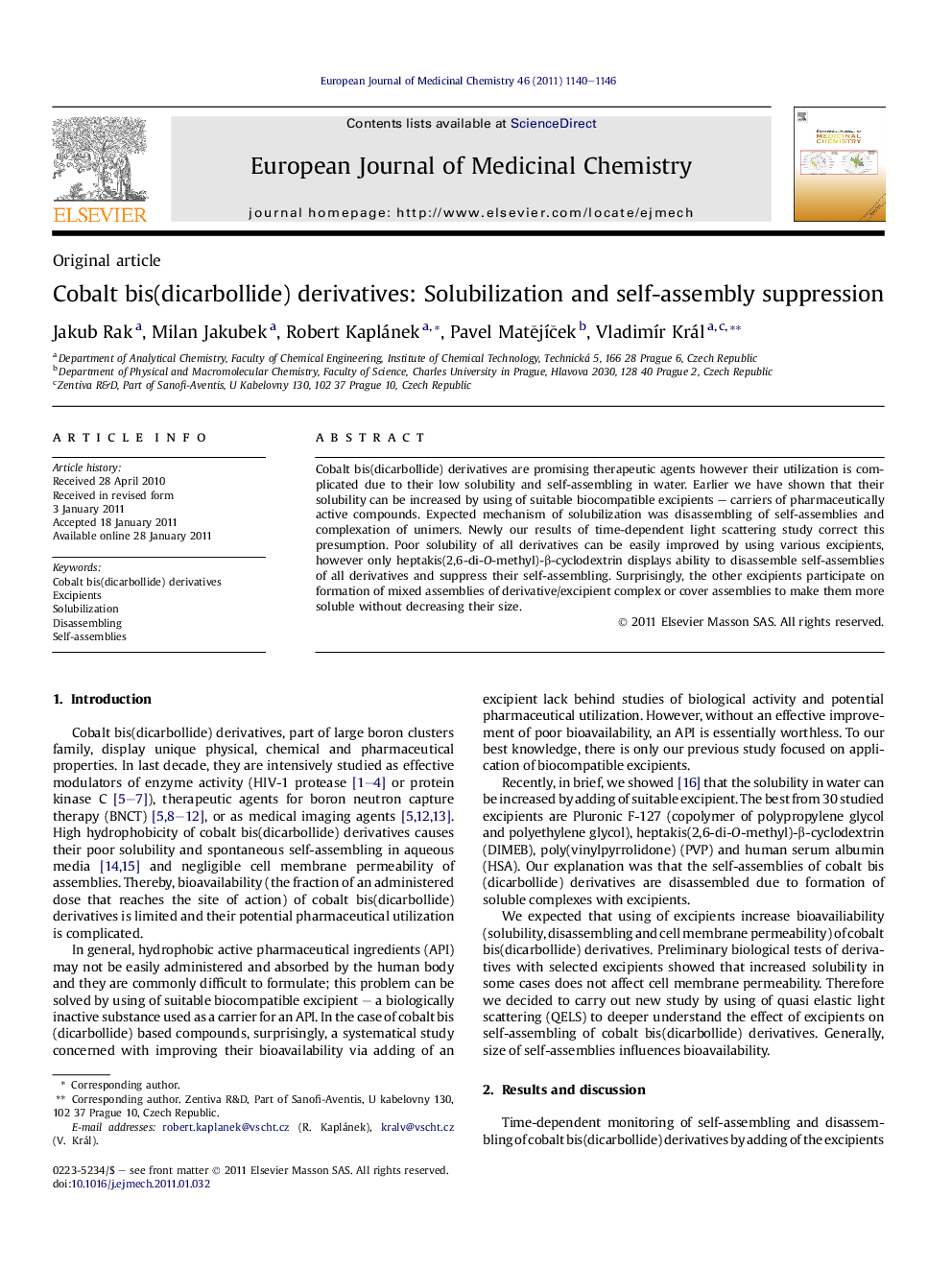| Article ID | Journal | Published Year | Pages | File Type |
|---|---|---|---|---|
| 1397565 | European Journal of Medicinal Chemistry | 2011 | 7 Pages |
Cobalt bis(dicarbollide) derivatives are promising therapeutic agents however their utilization is complicated due to their low solubility and self-assembling in water. Earlier we have shown that their solubility can be increased by using of suitable biocompatible excipients – carriers of pharmaceutically active compounds. Expected mechanism of solubilization was disassembling of self-assemblies and complexation of unimers. Newly our results of time-dependent light scattering study correct this presumption. Poor solubility of all derivatives can be easily improved by using various excipients, however only heptakis(2,6-di-O-methyl)-β-cyclodextrin displays ability to disassemble self-assemblies of all derivatives and suppress their self-assembling. Surprisingly, the other excipients participate on formation of mixed assemblies of derivative/excipient complex or cover assemblies to make them more soluble without decreasing their size.
Graphical abstractThe light scattering study of cobalt bis(dicarbollide) derivatives self-assembling suppression by selected excipients is reported.Figure optionsDownload full-size imageDownload as PowerPoint slideResearch highlights► Poorly soluble cobalt bis(dicarbollide) derivs. spontaneously self-assemble in water. ► Solubility of derivs. can be increased by using of suitable biocompatible excipients. ► Mechanisms of solubilization of derivs. are studied by QELS. ► DIMEB disassembles and suppress self-assembling, no formation of secondary assemblies. ► DIMEB, Pluronic F-127, PVP particles are small enough to permeate cell membrane.
